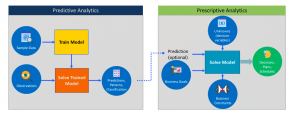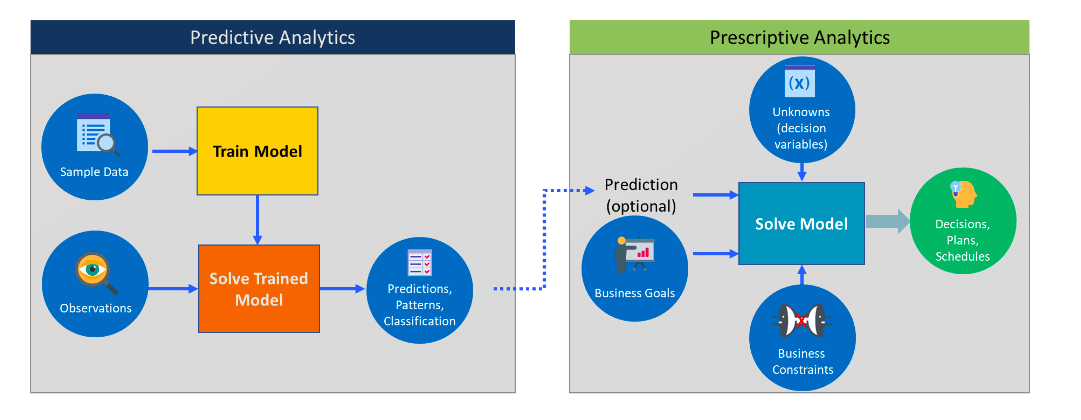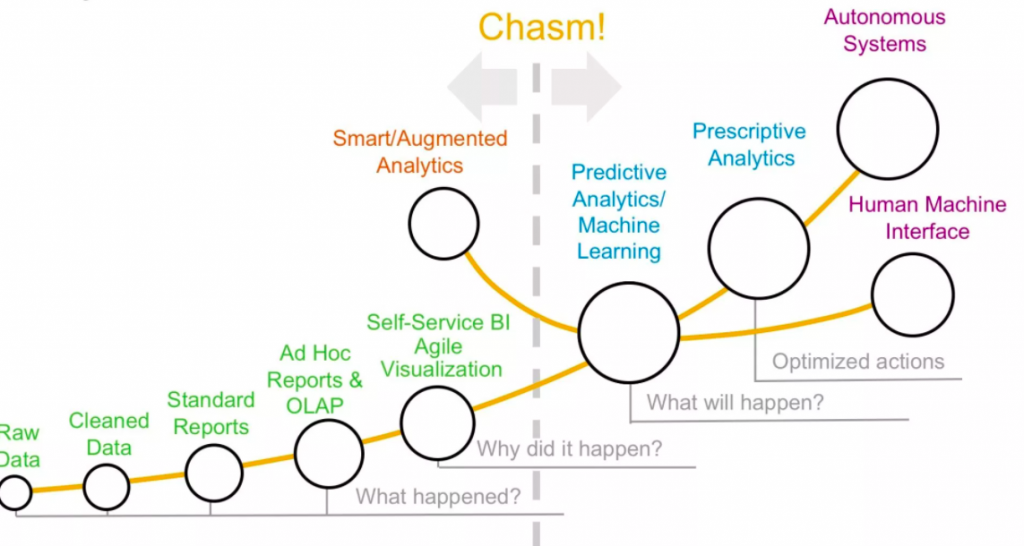
In this post, you will quickly learn about the difference between predictive analytics and prescriptive analytics. As data analytics stakeholders, one must get a good understanding of these concepts in order to decide when to apply predictive and when to make use of prescriptive analytics in analytics solutions / applications.
Without further ado, let’s get straight to the diagram.

In the above diagram, you could observe / learn the following:
- Predictive analytics: In predictive analytics, the model is trained using historical / past data based on supervised, unsupervised, reinforcement learning algorithms. Once trained, the new data / observation is input to the trained model. The output of the model is prediction in form of regression (numerical estimate), classification (binary or multi-class classification), clusters (segmenting the data in groups based on similarity) etc.
- Prescriptive analytics: In prescriptive analytics, one or more mathematical algorithms are applied on the outcomes of predictive analytics solutions / predictions (optional) and business goals, and, the best solution is recommended. The recommended solution optimises the business goal, taking into consideration all decision variables, constraints, and trade-offs. Prescriptive analytics is primarily related to decision optimization problems. Prescriptive analytics builds upon the results of predictive analytics. It suggests all favourable outcomes and, which courses of action needs to be taken to reach a particular outcome. Recommendation systems are classical examples where prescriptive analytics is applied. Here are some examples of prescriptive analytics solutions:
- Google’s self-driving car: Decision on when and where to turn, whether to slow down or speed up and when to change lanes is done using prescriptive analytics methods.
- In sourcing, the factors affecting pricing is considered to get the best terms and appropriately hedge risks.
Here is another diagram which depicts the path from descriptive analytics to prescriptive analytics. Quite a self explanatory diagram. Note the difference between predictive and prescriptive analytics.

References
Here are some good links to understand the concepts of predictive and prescriptive analytics:
- Coefficient of Variation in Regression Modelling: Example - November 9, 2025
- Chunking Strategies for RAG with Examples - November 2, 2025
- RAG Pipeline: 6 Steps for Creating Naive RAG App - November 1, 2025
I found it very helpful. However the differences are not too understandable for me